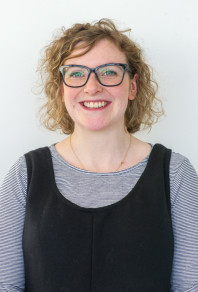
What are Histopathologist?
Histopathologists are doctors who use microscopes to study the tissues and cell samples taken from patients in a variety of tests.
How did you get into this role?
To become a histopathologist, I first went to medical school and then worked as a junior doctor in several different specialties before deciding to apply to the Histopathology training programme.
I was attracted to histopathology because of how closely it relates to the science of how the body works and because of how practical it is.
I really enjoy the problem-solving that is required for each case and that the information we provide directly helps patients get the right care.
What does the role involve?
An average day for a histopathologist involves a mix of activities:
We look at specimens that have been sent in by surgeons and GPs and decide which areas we want to look at in more detail under the microscope.
These areas of tissue then get processed in the laboratory by biomedical scientists and turned into glass slides which we can look at under microscope.
When we look at these slides, we search for abnormalities and try to categorise them into a diagnosis.
We share this information with other doctors by preparing and sending out a report.
When patients are diagnosed with cancer, we attend team meetings with the surgeons, oncologists, specialist nurses and radiologists to help decide what other investigations or treatment is needed.
As a trainee I get involved with all of these activities and am supervised by a consultant and check my work with them closely.
What else do Pathologists do?
Some Consultant histopathologists also perform post mortems for the Coroner in order to investigate why someone has passed away.
As a trainee, I have learnt to do these examinations under supervision and I help produce reports for the family and Coroner on what we have found.
There are also lots of opportunities to get involved in teaching, often this is for medical students at the University of Leeds.
Lots of histopathology trainees are also involved with research at the University, covering a wide range of topics. Leeds has a really good reputation for the research it does in this area.
There are lots of developments in histopathology at the moment, which mean our day to day job is always evolving and it is exciting to be involved in the specialty.
For instance, there are regular advances in the tests we do on patient samples. These new tests give us even more information which helps doctors tailor treatments more specifically to their patients (Personalised medicine).
Recent advances in technology mean we can now scan slides and look at high quality images of tissue on a digital screen instead of a under microscope. This is changing the way we work – using computers more will help make things more efficient and mean we can connect more easily with experts all over the world. It also means you can see what we are looking at! You can see examples of some of the most common cancers here http://www.virtualpathology.leeds.ac.uk/public/
Where do you go next after this role?
I have a few more years of training and exams to do before I can work as a Consultant Histopathologist. Trainees rotate around different hospitals in the region so we can get a good breadth of experience. I am working in Leeds at the moment but expect to work across the pathology departments at Harrogate, York, Hull, Bradford, Calderdale and Dewsbury as part of my training.
At the moment, I am also doing some extra research in digital pathology, which I find really interesting. I have joined a larger team working on digital pathology, the Northern Pathology Imaging cooperative – you can read more about what we are doing here http://www.virtualpathology.leeds.ac.uk/npic/
How does the work you do help people?
We don’t often get to meet our patient’s but they are at the centre of everything we do and it is really rewarding to contribute to their care.
We help diagnose disease and give extra details about the disease which can help doctors choose the best treatments for their patients.
